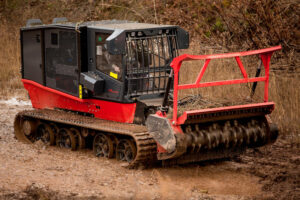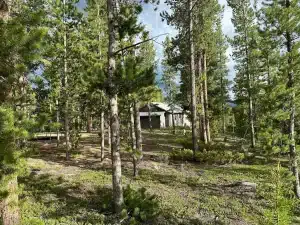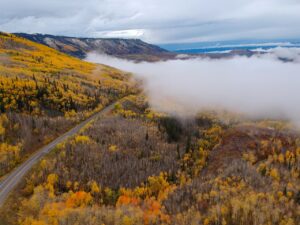
Land management involves clearing wooded areas to create usable land for agriculture, building projects, or other industrial purposes. However, with environmental concerns rising, the methods used to clear these areas have come under more scrutiny.
Generally speaking, land clearing comes with many complex concerns. The machinery required, labor costs, and additional expenses can make large land-clearing projects daunting.
Forestry mulching allows you to manage vegetation and tree growth in wooded areas without exorbitant costs or devastating ecological impacts. Forestry mulching can benefit these areas and leaves the soil structure intact even during land clearing.
To learn more about whether forestry mulching is worth it, call land-clearing experts from Bear Claw Land Services. Our expert land-clearing technicians understand how to transform wooded areas into usable space while maintaining the integrity of the land. Call (970) 363-4837 to get a free quote today!
How Forestry Mulching Works
Forestry mulching is an alternative to vegetation management after a land-clearing project. While initial land-clearing efforts remove larger natural structures from an area, forestry mulching aims at eliminating small leafy plants and other vegetation.
Alternative measures require multiple machines and higher costs for labor and operation. These might include anything from bulldozers, tree shears, excavators, and wood chippers. However, mulching uses a single machine to transform the remaining vegetation into a layer of mulch on the wooded area’s floor.
After these processes, the mulched material lays on the area’s floor and provides various benefits. Thus, forestry mulching is one of the more effective methods of land management after a land-clearing project, increasing efficiency and reducing costs.
The Benefits of Forestry Mulching
There are many benefits from forestry mulching. From financial to ecological benefits, the following factors make forestry mulching one of the best land management methods:
- Improves soil fertility: After land clearing, the remaining land may struggle to maintain nutrients and fertility. However, forestry mulching adds a layer of natural, native mulch to the area’s soil. These mulch pieces provide additional nutrients that become a natural fertilizer for the ground.
- Quicker and more affordable: Alternative methods to land management include multiple machines and higher labor needs. These requirements make other processes more expensive. Because of the single-machine conditions of forestry mulching, this land management practice is far more affordable and efficient.
- Possible on any terrain in any weather: Steep slopes and snowy weather can combine to make land management impossible. For methods that require many machines and workers, these conditions could eliminate the ability to clear land. Conversely, forestry mulching offers the ability to clear land regardless of terrain or weather.
- Reduces the risk of wildfires: These methods eliminate living and dead vegetation from an area’s floor, reducing the possibility of wildfires that can run rampant and destroy the site.
- Improves the land’s aesthetic: Dead vegetation and leftover forests can damage the look and aesthetic of any recently cleared area. Since mulching eliminates these remnants, it can significantly improve a land’s aesthetic.
- Reduces soil erosion: Soil erosion risks increase after land management removes root structures and other essential soil anchors. However, forestry mulching leaves these features intact, allowing them to act as an erosion barrier to reduce this outcome.
- Attempts to maintain habitats: Pheasants, doves, elk, deer, and other woodland creatures rely on vegetation and soil nutrients to survive. These methods support the wooded area and attempt to maintain habitats for these animals.
- Reduces pest populations: Pests in natural areas thrive on old vegetation and leave behind remnants of a cleared area. Forestry mulching removes overgrowth that allows fleas, ticks, and other pests to thrive.
Forestry Mulching vs. Alternatives
For many reasons, forestry mulching provides a superior method of land management to many other alternatives. First, these services are more affordable than other methods. With average costs of around $150 to $250 per hour, the $1,500 a day cost of forestry mulching is sometimes two or three times less than other alternatives.
With decreased machinery, labor, and land limitations, forestry mulching is a much more flexible land management strategy. Seasonal weather extremes can make other land management strategies impossible on days when snow, rain, or adverse terrain work against your chosen method. However, mulching is possible during any season on any terrain.
Finally, forestry mulching is one of the only land management strategies that attempt to maintain some of the natural integrity of an area. Leaving soil structures and natural nutrients intact reduces the ecological impact.
How to Decide If Forestry Mulching Is Right for You
Forestry mulching could be suitable for many reasons. First, if your land features a challenging slope or terrain, this method will be easier than the alternatives.
If natural features or animal habitats thrive in your area, consider the ecological benefits of choosing forestry mulching over other land management strategies. Finally, if cost or time concerns are pressing for your land management needs, forestry mulching may be your best option.
Our Commitment to Transparent Pricing
At Bear Claw Land Services, we want you to receive the highest quality land management. While there can be high costs associated with such work, we commit to providing the most accurate, transparent price. You’ll know what you’re getting upfront when you choose Bear Claw Land Services for land management projects.
Hire Forestry Mulching Professionals from Bear Claw Land Services
For more information about professional forestry mulching services in Winter Park, CO, call (970) 363-4837 and request a free estimate from Bear Claw Land Services today!





